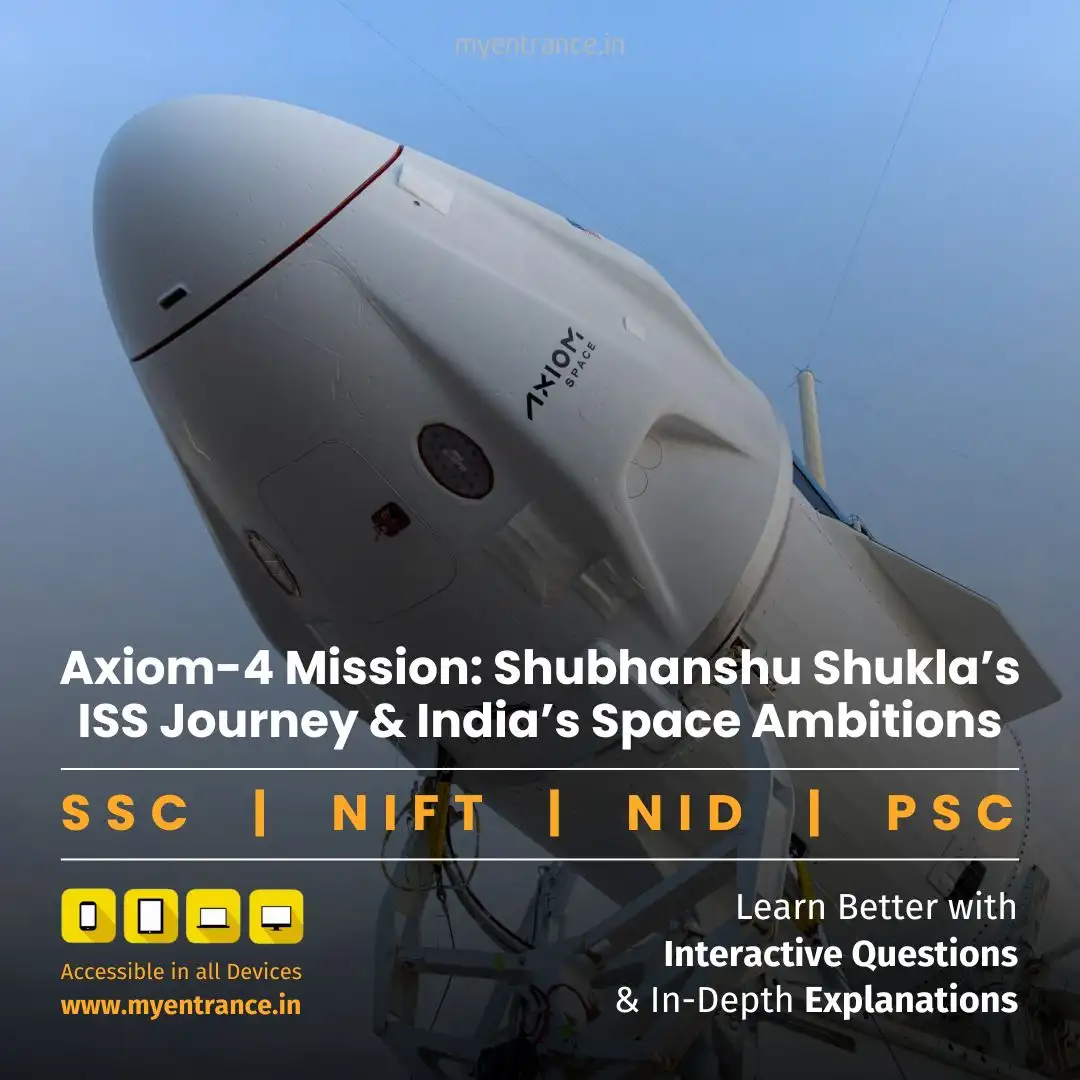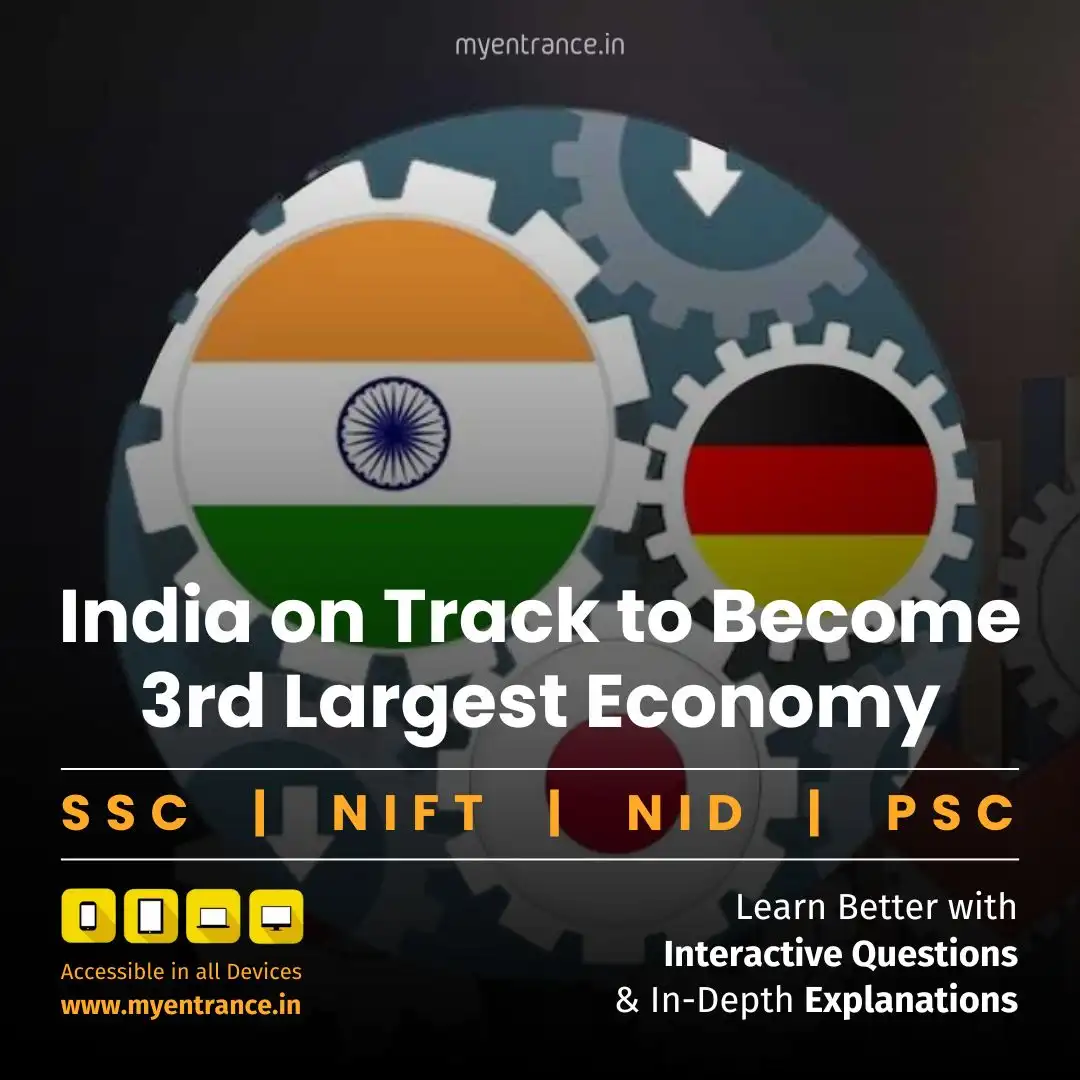Select Language
Shubhanshu Shukla at ISS: Microgravity Research & Space Tech Insights for UPSC
ISRO’s historic collaboration with NASA-SpaceX sends astronaut Shubhanshu Shukla to the ISS via Axiom-4. This mission accelerates India’s space research and commercial ambitions.
1. Mission Objectives & Global Significance
Microgravity Experiments: Shukla’s team will study:
Protein crystal growth (drug development insights)
Tissue regeneration in zero-gravity
4-Nation Crew: First astronauts from Hungary (Tibor Kapu) and Poland (Sławosz Uznański-Wiśniewski), strengthening space diplomacy.
ISS as Lab: Only space-based platform for long-term microgravity research; critical for future Mars missions.
2. Technical Delays: Science Behind LOX Leaks
Critical Fuel Issue: Liquid oxygen (LOX) cools to -183°C to enable kerosene combustion in Falcon 9 rockets.
Leak Impact: Reduces thrust capacity or risks explosion (delayed launch from May 29 to June 19).
SpaceX Fix: Advanced sensors to detect pipeline fractures in cryogenic systems.
3. Strategic Value for India
Gaganyaan Prep: Shukla’s experience informs ISRO’s 2025 crewed mission (life support systems, re-entry protocols).
Boosting Space Economy:
IN-SPACe aims to grow India’s space market from $8B to $40B by 2040.
Private firms like Skyroot Aerospace gain sub-system validation opportunities.
IPR in Space: Experiments may yield patentable biotech innovations; India needs stronger orbital IP frameworks.
5 Key Takeaways
Historic Milestone: Shukla is India’s 2nd astronaut in space (after Rakesh Sharma, 1984).
Tech Transfer: SpaceX’s reusable Falcon 9 tech could inspire ISRO’s Next-Gen Launch Vehicle (NGLV).
Market Expansion: India targets 10% global space economy share by 2030 via missions like Axiom-4.
Delay Lessons: LOX management is critical for cryogenic engines—relevant to ISRO’s semi-cryogenic projects.
Research Impact: Microgravity findings could revolutionize cancer treatment and material science.
Sample Q&A for UPSC Mains
Q: How does Axiom-4 advance India’s “Space Economy” vision?
A: Validates private-public partnerships (IN-SPACe), attracts FDI in space tech, and builds expertise for commercial satellite launches.
Q: Why are LOX leaks critical in rocket launches? Explain with Axiom-4’s delay.
A: LOX enables kerosene combustion at -183°C; leaks reduce thrust or cause explosions. Falcon 9’s June delay underscores cryogenic engineering challenges.
Q: Discuss IPR issues in space research with reference to ISS experiments.
A: Microgravity inventions (e.g., protein drugs) face jurisdictional gaps. India needs a space IP policy aligned with the Outer Space Treaty.
Q: How does ISS collaboration strengthen India’s space diplomacy?
A: Joint missions with Hungary/Poland (Axiom-4) build multilateral trust, easing tech-sharing for projects like Chandrayaan-4.
Q: What lessons from Axiom-4 can aid India’s Gaganyaan mission?
A: Crew safety protocols, emergency launch-scrub procedures, and real-time bio-monitoring systems.
Most Predicted Questions
Comprehensive study materials, Expert-guided tips & tricks, Mock tests and instant results.
Start your SSC, NIFT, NID, FDDI, PSC journey today with MyEntrance, your ultimate online coaching platform.








